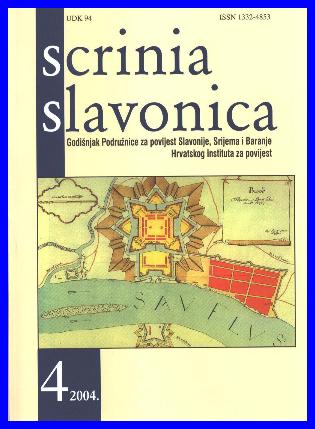Osnivanje i djelatnost četničkih udruženja na području grada i kotara Vukovar u monarhističkoj Jugoslaviji (1918-1941)
Foundation and activities of the Chetnik associations in Vukovar and the Vukovar district during the monarchist Yugoslavia (1918-1941)
Author(s): Zdravko DizdarSubject(s): History
Published by: Hrvatski institut za povijest
Keywords: Kingdom of Yugoslavia; greatserbian ideology; Chetnik movement; town of Vukovar; the Vukovar district
Summary/Abstract: The town of Vukovar and the Vukovar district were the locus of interest of greatserbian politics and of the chetnik asssociation ever since its inception. Namely, this political current considered the area, as well as the whole of Slavonia, part of what constituted their idea of Great Serbia. Vukovar thus happened to become part of the Serbian "interest sphere". The chetnicks enjoyed, from the very outset, widespread support among the greatserbian governing authorities, primarily in those belonging to the Radical and Democratic party. The first chetnick associations emerged from the soil of the two political parties as can be ascertained by as little as a short glance at the then political trends, especially the election results. Given the structure of the population in the Vukovar area (comprised primarily of Croats and other non-Serbs) and its location (alongside the Danube where many important traffic routes converged, and where it bridged the gap between the Serbs in the east, in Vojvodina and Serbia and those in the west, in Slavonia) the chetnicks in the area had a special mission – to help greatserbian authorities supress first the communist (1920/21), and then the Croatian national movement held together by the Croatian Peasant Party, and to pave the way for a serbization of the area. This manifested itself in the colonization of more than 8.000 Serbs into the area, most of them arriving on a voluntary basis. The parties belonging to the greatserbian regime never lost their power and authority over the area until 1940. That is the reason why, soon after the foundation of the Serbian Chetnick Association Petar Mrkonjić, «Za Kralja i otadžbinu» («for the King and Fatherland»), the so called Račić Chetnicks, it was nowhere else but Vukovar (among the first places in Slavonia) that the central chetnick administration from Belgrade founded in 1925 twelve branches of this association numbering more than 300 members. Ever since their inception, those associations penetrated all the bodies of local administration, police forces, where most often their members or even leaders held key positions. As this chetnick association most directly represented greatserbian ideas, its thriving and activities in the area sparked off massive resistance among the people in Vukovar and in the Vukovar district. Joining the Croats after 1927 was also a part of Serbs gathered around Pribièeviæ's Serbian Democratic Party (although they were not so significant in number, they had some political impact). These two parties jointly formed the Peasant- Democratic Coalition, and both appeared on the chetnicks' black list. With the introduction of the so called January 6th Dicatorship in 1929 and the emergence of the Kingdom of Yugoslavia, and due to its narrow Serb-oriented frame, the chetnick association ceased to operate completely, so too in the Vukovar area...
Journal: Scrinia Slavonica
- Issue Year: 2004
- Issue No: 4
- Page Range: 212-287
- Page Count: 76
- Language: Croatian

